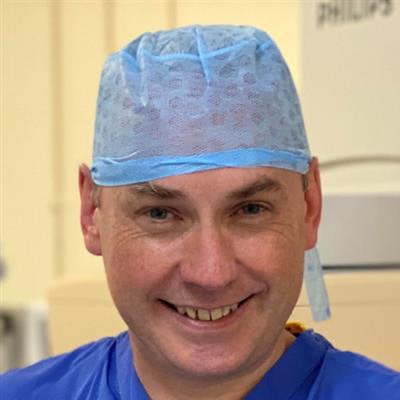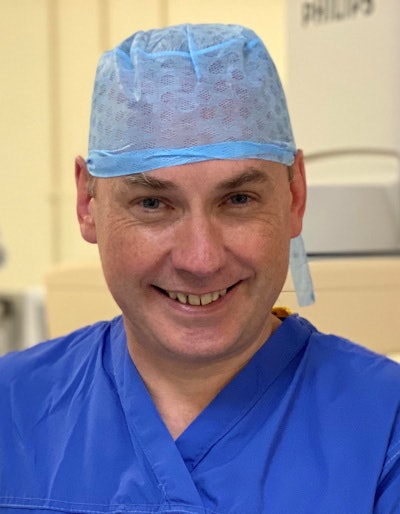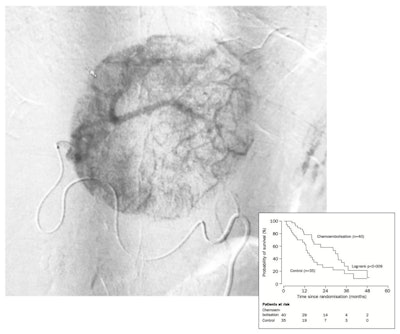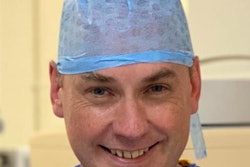
One of the great things about interventional radiology is the gratifying and instant feedback the imaging gives you. You can see where the blood vessel was leaking, your perfectly placed coil pack (or your embolic agent of choice), and the end result.
 Dr. Chris Hammond from Leeds, U.K.
Dr. Chris Hammond from Leeds, U.K.If you've got some nice 3D reconstruction software, the pictures of an endovascular aneurysm repair can be stunning. Identifying the feeding vessel to a liver cancer and injecting it with chemotherapy or percutaneously ablating a renal tumor can sometimes produce images demonstrating such precision that it's difficult to imagine why you'd treat it any other way.
Armed with such beautiful images attesting to the technical successes of our interventions, it's easy to see why sharing, and tagging them with #IRad, #CLIfighters, or #clotout (to name a few), is tempting. We want to show off the great stuff we do every day and advertise and proselytize about interventional radiology. But sometimes posting cases makes me uneasy, not only because of the confidentiality issues involved but because just like Instagram, they represent a filtered and distorted version of reality.
Technical skills make up only a part of what it means to be a good interventional radiologist. Clinical assessment, communication with patients and colleagues, and the knowledge of when it's better not to do something are also fundamental. I sometimes find trainees really struggle to engage with these skills, preferring the perhaps more tangible expertise of the angiography suite: doing stuff. A focus on imaging skews the perception of what is important.
Then there's a selection bias. It's rare to see disaster posted -- unless from that terrible institution the 'Outside Hospital.' But it's also uncommon to see failure, error, a suboptimal result, or simply the more mundane cases that make up much of our work. There is nothing wrong with celebrating our complex or impressive successes, but they are not the only cases we can learn from, and they don't say anything about overall safety or effectiveness.
People are what really matter
For me, there is a more fundamental issue: The emphasis on the technically impressive results is a subtle shift in focus from the patient to the operator. The patient is reduced to a cipher, an easel for the operator to display their artistry.
Interventional radiology is not about the beauty or the brilliance of our imaging outcomes. It's about people. And their outcomes are a lot more messy and unpredictable than the imaging. Some patients get better irrespective of what we do for them and some get worse despite our best efforts. Cancer progresses, angioplastied vessels go down, rebleeding happens, and symptoms recur. It's a Panglossian fallacy that just because something looks better, the patient gets better. Imaging can seem a convenient shortcut, but it is a surrogate of debatable quality. Cancer devascularization is not the same as survival and patency is not the same as symptom resolution.
You might think this sounds rather pious and po-faced. Where is the harm (anonymity aside) in sharing our technical achievements when we understand the nature of the medium? But I think this underestimates the power of social media to distort our thinking. A focus on the visually alluring competes for our attention with more objective sources of information, especially when keeping up with the literature is hard, time-consuming, and sometimes --admit it! -- tedious.
What's the solution? Posting great cases can be inspiring and fun. But should we not share some failures too, or something nontechnical, like a successful consultation, a difficult multidisciplinary team discussion, a paper you've read, or a decision you've struggled with?
If you post a case, give some clinical context and the outcome down the line. This is essential. Post a link to some high-quality literature so the evidence for your intervention can speak for itself. Maybe summarize the literature in a few tweets (and here, a gratuitous plug for #SeminalPapersInIR) or in an infographic such as those in an entry from April 2020 on this blog. That way we all gain by the sharing of more than a 280-character anecdote.
The immediacy and seductive power of your image is linked with the evidence base essential to keep interventional radiology safe, patient-centered, and effective. Used like this, social media in interventional radiology is an exciting and powerful tool.

I'd like to leave you with the image above of a transarterial chemoembolization (TACE) procedure. The patient survived for 22 months from the time the image was taken. What will you remember most about her? Her angiogram or the Kaplan-Meier chart predicting her fate?
Dr. Chris Hammond is a consultant vascular radiologist and clinical lead for interventional radiology at Leeds Teaching Hospitals NHS Trust, Leeds, U.K.
The comments and observations expressed herein do not necessarily reflect the opinions of AuntMinnieEurope.com, nor should they be construed as an endorsement or admonishment of any particular vendor, analyst, industry consultant, or consulting group.




















